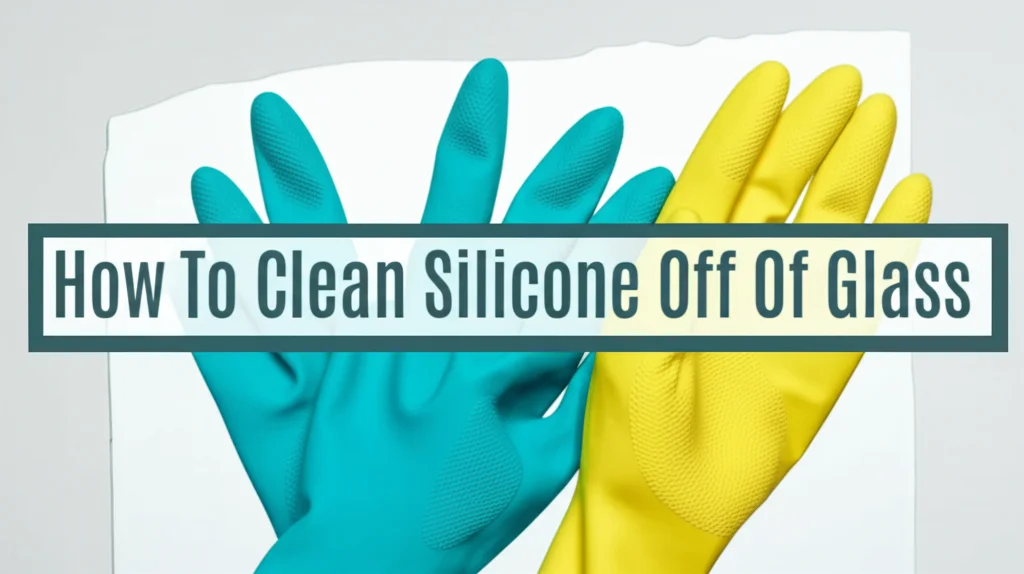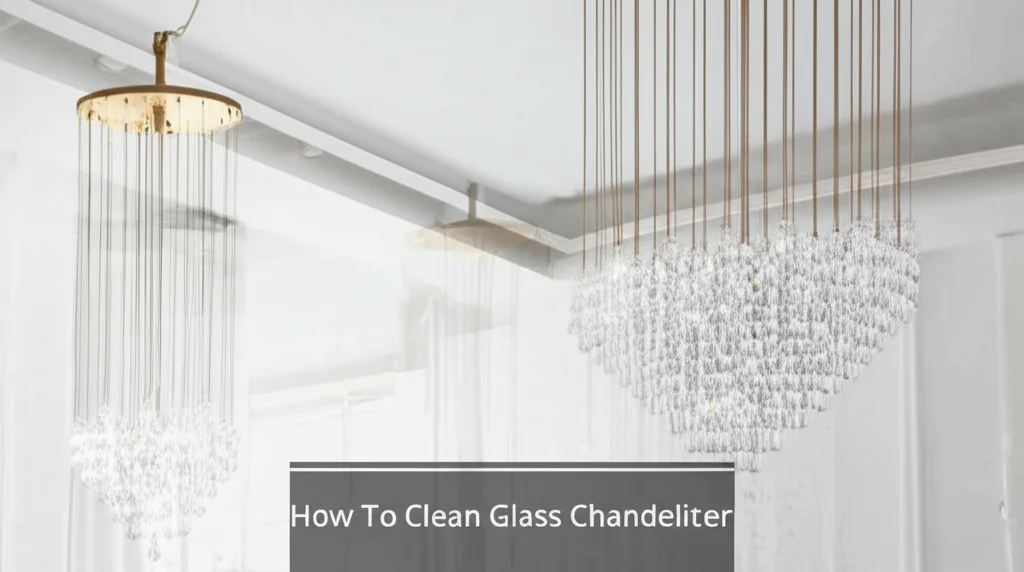· Home Cleaning · 6 min read
How To Clean Silicone Off Of Glass

How To Clean Silicone Off Of Glass: A Simple Guide
Ever finished a DIY project involving silicone sealant and found yourself with stubborn residue on your glass surfaces? It’s a common problem! Cleaning silicone off glass can seem daunting, but it doesn’t have to be. This article will walk you through several effective methods, using everyday items you likely already have at home. We’ll cover everything from gentle scraping to solvent-based solutions, ensuring a sparkling clean finish. Let’s dive into how to easily remove silicone from glass and restore its clarity.
Quick Answer: To clean silicone off glass, use a plastic scraper to gently remove bulk silicone, then apply rubbing alcohol or a silicone-specific remover. Let it sit for a few minutes, then scrape again and finish with glass cleaner for a streak-free shine.
Takeaway:
- Use a plastic scraper to avoid scratching the glass.
- Rubbing alcohol is a safe and effective solvent for silicone.
- Patience is key – avoid rushing the process.
Understanding Silicone and Glass: Why It Sticks
Silicone is a fantastic sealant, known for its flexibility and water resistance. However, its adhesive properties are strong, which is why removing it from glass can be tricky. Glass, while durable, is also susceptible to scratches, so aggressive cleaning methods are a no-go. The key is to find a balance between effective removal and gentle handling. Understanding this dynamic is the first step towards a successful clean. Silicone bonds to glass through a process called adhesion, creating a strong, yet flexible, connection.
Method 1: The Plastic Scraper & Rubbing Alcohol Approach
This is often the first method people try, and for good reason – it’s effective and uses readily available supplies. A plastic scraper is essential; metal blades will scratch the glass. Rubbing alcohol (isopropyl alcohol) acts as a solvent, breaking down the silicone’s adhesive bond. This combination makes tackling silicone residue much easier.
Step-by-Step Guide:
- Gather Your Supplies: You’ll need a plastic scraper, rubbing alcohol (70% or higher is best), paper towels, and glass cleaner.
- Initial Scraping: Gently scrape away as much of the silicone as possible with the plastic scraper. Work at an angle to avoid digging into the glass.
- Alcohol Application: Soak a paper towel with rubbing alcohol and apply it to the remaining silicone residue.
- Dwell Time: Let the alcohol sit for 5-10 minutes to soften the silicone.
- Second Scraping: Gently scrape again with the plastic scraper. The silicone should come off much easier now.
- Final Clean: Finish with a glass cleaner to remove any remaining residue and streaks. You can find excellent glass cleaners at https://www.beacleaner.com/how-to-clean-outside-windows-upstairs/.
Method 2: Using Oil-Based Solutions
Believe it or not, oil can be a surprisingly effective silicone remover. This works because silicone is oil-based itself, and like dissolves like. Common household oils like vegetable oil, baby oil, or even peanut butter can help loosen the silicone’s grip on the glass.
How to Use Oil:
- Apply the Oil: Generously apply your chosen oil to the silicone residue.
- Let it Sit: Allow the oil to sit for at least 30 minutes, or even overnight for stubborn residue.
- Scrape and Wipe: Use a plastic scraper to remove the softened silicone. Wipe away the oily residue with paper towels.
- Clean with Soap and Water: Wash the glass with warm soapy water to remove any remaining oil.
- Finish with Glass Cleaner: Finish with a glass cleaner for a streak-free shine.
Method 3: Silicone-Specific Remover
For particularly stubborn silicone, a dedicated silicone remover is your best bet. These products are specifically formulated to break down silicone without damaging surfaces. They are available at most hardware stores.
Using Silicone Remover:
- Read the Instructions: Always read and follow the manufacturer’s instructions carefully.
- Apply the Remover: Apply the remover to the silicone residue.
- Dwell Time: Allow the remover to sit for the recommended time.
- Scrape and Wipe: Use a plastic scraper to remove the softened silicone. Wipe away any remaining residue with a clean cloth.
- Clean the Surface: Clean the glass with warm soapy water to remove any traces of the remover.
Method 4: Heat Application (Use with Caution!)
Applying gentle heat can soften silicone, making it easier to remove. However, this method requires extreme caution as excessive heat can crack the glass. A hairdryer on a low setting is the safest option.
Heat Application Steps:
- Low Heat: Use a hairdryer on the lowest heat setting.
- Gentle Warming: Gently warm the silicone residue for a few minutes. Do not overheat the glass.
- Scrape Immediately: While the silicone is warm and softened, immediately scrape it away with a plastic scraper.
- Clean the Surface: Clean the glass with glass cleaner to remove any residue.
Preventing Silicone Messes in the Future
Prevention is always better than cure! Here are a few tips to minimize silicone messes during your next project:
- Masking Tape: Apply masking tape around the edges of the glass before applying silicone. This creates a clean line and prevents silicone from getting on unwanted areas.
- Precise Application: Use a steady hand and apply silicone carefully, avoiding excess.
- Clean Up Immediately: Wipe away any excess silicone immediately with a damp cloth. This prevents it from drying and becoming difficult to remove.
- Proper Tools: Invest in a good quality caulking gun for precise silicone application.
Dealing with Different Types of Glass
The method you choose might depend on the type of glass you’re dealing with. For example, tinted glass or coated glass might be more sensitive to certain solvents. Always test a small, inconspicuous area first to ensure the cleaning solution doesn’t cause any damage. If you’re unsure, consult a professional glass cleaner. You can also learn more about cleaning different types of flooring at https://www.beacleaner.com/how-to-clean-vinyl-plank-flooring/.
FAQ: Your Silicone & Glass Cleaning Questions Answered
Q: Can I use a razor blade to remove silicone from glass?
A: While tempting, razor blades can easily scratch glass. A plastic scraper is a much safer option.
Q: Will vinegar remove silicone from glass?
A: Vinegar is not very effective at dissolving silicone. Rubbing alcohol or a silicone-specific remover are better choices.
Q: How long does it take to remove silicone from glass?
A: The time varies depending on the amount and age of the silicone. It can take anywhere from 15 minutes to several hours.
Q: Is there a natural alternative to rubbing alcohol?
A: While not as effective, some people have success with lemon juice, but it requires a longer dwell time and may not work on stubborn residue.
Q: What if the silicone is in a hard-to-reach area?
A: Use a cotton swab or a small brush to apply the cleaning solution to the silicone.
Conclusion: Achieving a Spotless Finish
Cleaning silicone off glass doesn’t have to be a frustrating experience. By using the right tools and techniques, you can achieve a spotless, streak-free finish. Remember to start with the gentlest method first – a plastic scraper and rubbing alcohol – and work your way up to more aggressive solutions if needed. Patience and a careful approach are key to avoiding scratches and damage. Now that you know how to tackle this common cleaning challenge, you can confidently take on your next DIY project! Don’t forget to always test cleaning solutions in an inconspicuous area first. For more cleaning tips and tricks, explore our other articles at https://www.beacleaner.com/how-to-remove-mold-from-shower-caulking/.




